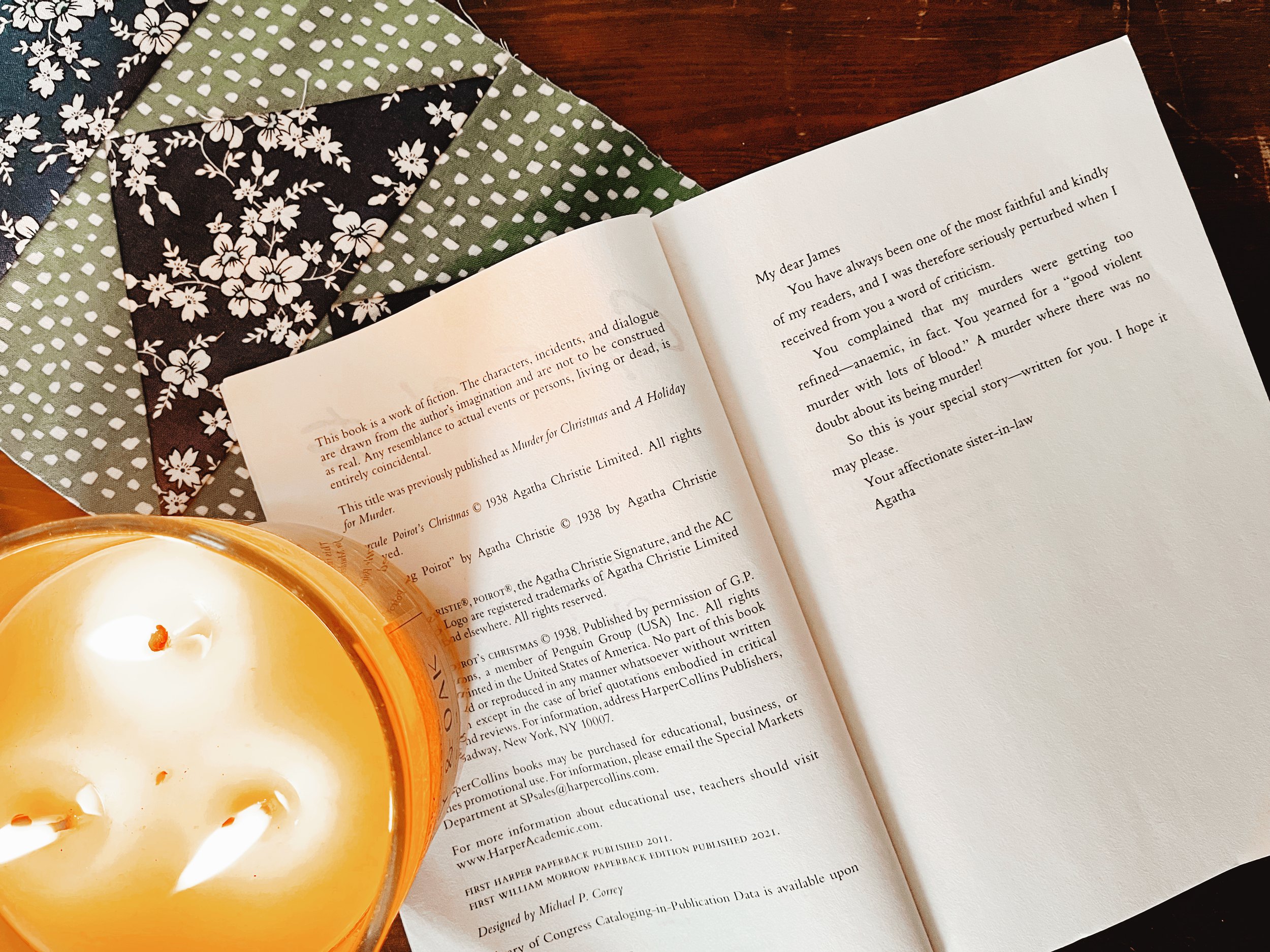Did Agatha Christie Write “Cozy Mysteries?”
I recently heard a podcaster plant Agatha Christie firmly in the “cozy mystery” genre and I took immediate offense. I thought to myself, “There is no way this person is a true fan! Who would reduce the ‘ Queen of Crime’ to a such a simplistic genre?!”
It turns out, the podcaster was indeed not a true fan and admitted to not having read much in the whodunnit genre in general, so I forgave her and moved on … well, almost. The fact that I’m writing an article arguing why she was wrong implies that I have not actually moved on and that I feel I must defend Agatha Christie’s novels as anything but “cozy”.
This post may contain affiliate links, which means that while I am not paid to promote certain items, I will earn a small commission should you purchase items through these links. For more info, see my disclosure policy.
What are “Cozy Mysteries” Anyway?
After some pondering and reading and Reddit-thread-wandering, I’ve collected the most widely accepted tropes and criteria for what, to most people, counts as a “cozy mystery”.
A quick disclaimer, though, before you read on: I’m saying “always”, but I mean usually. And I know there are cozy mysteries that break these rules. I’m not being disparaging, I’ve enjoyed a few cozies myself. This is an opinion piece, so even if you’re a cozy fan, don’t let my opinion offend you. Ha!
The Cozy Criteria:
The protagonist is always female and usually white. And young … ish. Old enough to be divorced or to have jilted or been jilted by a fiancee or some such thing, but not old enough to be unattractive. (I’m thinking now that there’s a series involving knitting, or quilting maybe, that does not fit this criteria? Hmmm.)
There is always a theme to a cozy series. Quilting, Cats, Chocolate Bar Catering, Coffee (so many seem to be food related.)
The protagonist often owns a shop of some kind, according to the series’ theme.
There is always a pet. ALWAYS.
There is never gore. The murder is neat and clean, nothing creepy or too overly disturbing. Un-messy mysteries only.
There is always a love interest.
The setting is almost always a small town and the protagonist has almost always just relocated to said small town for some life-upheaval-new-beginning reason, such as having been recently jilted (see point 1).
The murdered person is always unlikeable and the murderer even more so.
They tend to be predictable. If there’s a twist, it’s not really a surprise.
So Did Agatha Christie Write Cozy Mysteries?
Well, let’s take this point by point.
Of Christie’s most famous sleuths — Poirot, Miss Marple, Tommy & Tuppence — none of them fit the young/single/female criteria. Poirot was often disparagingly called a foreigner by other characters, so he can perhaps qualify as an underrepresented person in his time and place. I have heard rumblings of some cozy mysteries newer to the market that are more ethnically diverse, which is great to see, but Christie’s main characters definitely don’t fit into the current cozy character mold.
No themes for Agatha Christie! Series, yes, themes, no — culinary or otherwise.
No theme, no shop ownership necessary.
Ok, some Agatha Christie novels have pets and in a few, the dog is a main character and/or clue. Agatha being a dog person (she was, look it up) makes me love her even more. But, pets were not included to the extent that a cozy mystery involves them. They’re in Christie novels when they’re necessary, but they aren’t personified and chatted with and/or fed or walked every few pages. And the main sleuths certainly don’t keep pets, which is a pet’s main gig in cozies.
Ok, here is where we start to veer off the cozy course! Agatha Christie wrote some pretty gruesome and disturbing crimes. She may not have described them in gory detail, James Patterson style, but she imagined murders for some of her stories that were bloody and sad, and cases that were loaded with depth and moral dilemmas. She didn’t shy away from difficult-to-swallow victims or methods.
Any romance, if it exists in an Agatha Christie novel, is only a nice surprise at the end of a story, it’s never the main thing. Her stories just don’t need a love interest or sexual tension in order to keep the reader invested to the end. Of course, love is a common motive for murder, so there is a ton of relational angst and drama woven into her books, and she did know how to write a love story — just read Mary Westmacott for proof — she just knew how to weave a romance into a murder mystery seamlessly, so that the reader is invested for the solution to the murder puzzle, and is happily surprised by the romance it results in. Conversely, I’m not sure that mega fans of cozy mysteries would be in it at all if there were no romantic angst in every chapter.
Agatha Christie did love a small town and many of her novels were set in them, including Miss Marple’s Saint Mary Mead. But others were set in exotic locations, in cities, or manor houses, or on boats or trains. She didn’t hesitate to take the detective out of his or her native environment. This is something that is pretty unheard of in a typical cozy mystery.
This is what I believe is one of the biggest differences between Agatha Christie and the cozy genre. Christie did not hesitate to kill off the most loved and attractive person, nor to make the most lovable person the murderer! She might even write a child as the guilty party, or the narrator even, and she might cause the beautiful heiress to be murdered. I think she was more of a realist in that regard. Anyone is capable of murder, as Poirot teaches Hastings in Curtain. And anyone can be at risk.
Which brings me to the final point. Christie’s books are extremely difficult to figure out before the end. Her detectives were only a reflection of her own personal ingenuity in plot development. The twists and turns are never predictable; she was truly a master of “the twist”, and usually included more than one, until the solution to the puzzle was a complete surprise.
So, What Genre Did Agatha Christie Write?
Agatha Christie was the Queen of Crime during the “Golden Age of Detective Fiction”. I think it’s safe to call her stories a number of things: crime novels, murder mysteries, whodunnits, detective fiction, even thrillers in some cases (I’m lookin’ at you, Endless Night). But just don’t call her “cozy”, okay? It simply doesn’t fit.
Sincerely,
Ariadne
P.S. I do not enable comments on individual articles, but I do encourage Letters to the Editor! Please know that your thoughts may be included in an article featuring these letters at some point down the road, though your email address will be kept confidential, of course.




